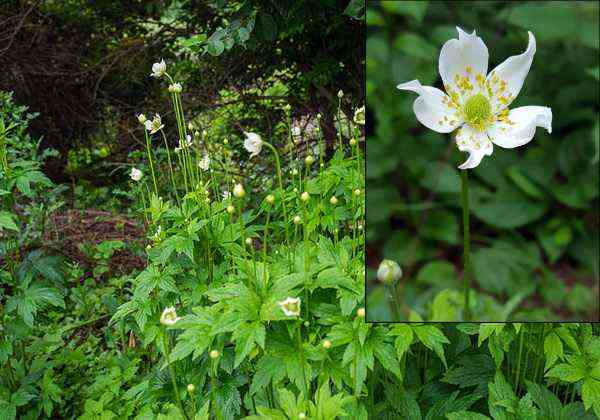Your cart is currently empty!
Sedum Autumn Fire Growing And Care
The autumn fire variety features rich, rosy-pick flowers which slowly age throughout the season, eventually turning a coppery red color.
Your cart is currently empty!
Photo:
Krzysztof Ziarnek, Kenraiz, CC BY-SA 4.0, via Wikimedia Commons
Thimbleweed is an excellent spring flower for the shaded or woodland garden, with flowers from summer to early fall. It is a good choice for naturalized areas or native wildflower gardens. It is not an aggressive species.
A few fine, short, soft hairs grow on the plant. It has a ramified stem that grows 60 to 100 cm tall above the small leaves that grow around the flower (involucre). The stalks of the basal leaves are long. They are divided into three sections, which are further subdivided.
Botanical Name: Anemone virginiana
Also Called: Tall Anemone
En français: Anémone de Virginie
Colour:
Blooms:
Sun / Shade:
Height:

Anemone virginiana is easily grown in average, dry to medium, well-drained, sandy-humusy soil. Though it prefers in full sun to part shade, it tolerates full shade. It is not as aggressive as most other anemone species.
You can propagate thimbleweed by seeds sown in fall or early spring. Or, divide older established plants.
Meadows, borders, and fence lines are its natural habitat. Ferns, False Solomon’s seal, may apple, yellow wood poppy, amsonia, asters, and sedges are all good companion plants.
This wild plant is spurned by animals due to its blistering sap. Even deer will avoid browsing the plant because all parts have a chemical which causes pain, blisters and irritation of the mouth that can develop into vomiting and diarrhea if ingested.
When consumed in large quantities, all parts of this plant are toxic. This plant is expectorant, astringent, and emetic. A decoction of its roots was used by indigeneous nations to treat coughs, tuberculosis, and diarrhoea.
The autumn fire variety features rich, rosy-pick flowers which slowly age throughout the season, eventually turning a coppery red color.
This a summary of the most frequent comments received from 81 questionnaire responses received by Gardens Ottawa between February 8th and March 31st, 2019.
Give your garden an update this season with wintergreen – featuring gorgeous, white bell-shaped flowers and bright, pinkish-red berries. Its glossy, evergreen foliage adds beauty, and it makes an excellent ground cover for shady areas. Plant wintergreen to enjoy it’s vibrant ground cover and fragrant, evergreen foliage!
Discover the best plants and flowers for dogs and cats, while learning about toxic options to protect your beloved pets. Consult with a vet if needed.
Discover the most effective mosquito repellent plants for indoor and outdoor. Also, learn about companion plants that repel mosquitoes and other insects.
Learn how to grow lavender from seed and enjoy its therapeutic benefits for stress relief and peaceful sleep. Discover different varieties and creative uses for dried flower bunches.
GardeningCalendar.ca gets some funding from advertisers. If you click on links and advertisements at no cost to you, the site may receive a small commission that helps fund its operation.
© 2025 J&S Calendars Ltd.
Leave a Reply
You must be logged in to post a comment.